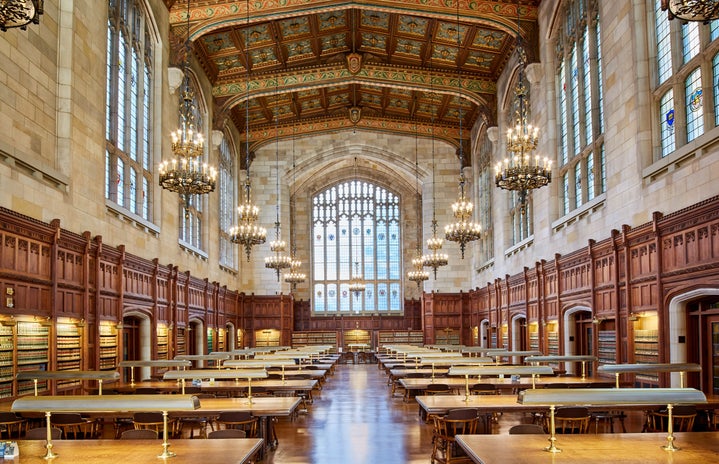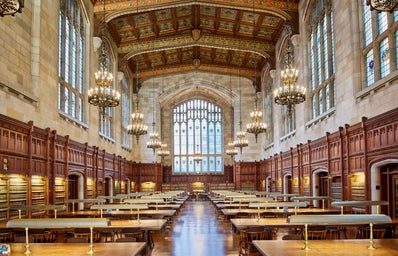Like thousands of students before them, the class of 2024 likely spent the first few months of their first semester trying to learn the lingo as older students asked:
“Wanna meet at POA?”
“Marston or Lib West?”
“The meeting is at the Reitz?”
“Covid testing is at the O’ Dome, right?”
As Trey Hemond, the public relations director for the University of Florida (UF) College Democrats said, “I mean absolutely, I think the names of the buildings are, you know, a part of student life.” He said UF building names are everywhere from casual conversations on campus, to online meme pages and they act as “cultural touchstones” for on-campus life at UF. They have also been the subject of research, protest and campus-wide discussion.
The university didn’t always have a lot of named buildings, though.
As university historian Carl Van Ness, Ph.D., explained, very few buildings were named after people or historical figures prior to World War II. Exceptions included Buckman Hall, Thomas Hall, Bryan Hall and Peabody Hall, as well as some of the first buildings named after UF presidents such as Sledd Hall and Murphree Hall. Other buildings were referred to as simply the science building or the engineering building.
“Then after World War II, they began to name those buildings, and they decided to name them after, you know, what we might call the ‘founding fathers,” Van Ness said. Examples of this include naming what is now Keene-Flint Hall after an early UF chemistry professor, Dr. Edward R. Flint.
UF became co-ed in 1947 and, according to Van Ness, began naming the new women’s dormitories that were built to accommodate female students after famous women of Florida.
“At that time, it was still a segregated university and so when they said, ‘famous Florida women’ they were really specifically talking about famous white women,” Van Ness said, “So there’s a Rawlings Hall named after Marjory Kinnan Rawlings, the famous white novelist, but there’s no Hurston named after the most famous novelist in Florida — novelist Zora Neale Hurston.”
After naming Jennings Hall and Rawlings Hall, the university began naming these women’s dormitories after the wives of famous white men in Florida such as Annie Douglass Broward, the wife of Florida Governor Napoleon Bonaparte Broward, and Angela Mallory, the wife of Confederate Secretary of the Navy Stephen Mallory. Yulee Hall is also named after the wife of a Confederate figure, and Reid Hall is named after Mary Martha Reid who was known as the “Clara Barton of the Confederacy,” according to Van Ness.
Some UF buildings are also named after donors.
As The Gainesville Sun reported in 2012, UF has been naming buildings after donors for decades and, in recent years, has now been able to do so without seeking legislative approval.
In recent years, there have been calls to rename some UF buildings such as the Stephen O’Connell Center and the J. Wayne Reitz Union.
The Stephen O’Connell Center was built in 1980 and is named after UF’s sixth president, Stephen O’Connell. UF’s O’Connell Center website describes O’Connell as having “left a legacy of fiscal strength and diversity at UF.” Yet O’Connell was also a former Florida Supreme Court justice who agreed with that court’s decision to reject Virgil Hawkins’ petition for entry into UF’s College of Law, which had denied him and other Black students entry purely on the basis of race. Later, during his time serving as president of UF, O’Connell refused to meet with students protesting the fact that in 1971, there were still only 343 Black students at UF compared to 20,000 white students. Sixty-six student protesters were arrested outside of O’Connell’s office, and 60 were put on academic probation in what became known as Black Thursday. In 2018, the UF Student Government Challenge Party started a campaign and petition in support of renaming the O’Connell Center citing much of this history.
Just this month, Gainesville Dream Defenders was one of the organizers of a protest for renaming the J. Wayne Reitz Union.
The Reitz Union website says that President J. Wayne Reitz, “adroitly and peacefully managed the racial integration of the university,” but those protesting pointed to Reitz’s welcoming of the Johns Committee that targeted and interrogatedLGBTQ+ students and teachers as well as his denial of admission of Black students as reasons to remove his name from the well-used student union building.
“By continuing these people’s legacy on campus through naming stuff after them, again, you’re sending a message to the students that you don’t care that these people did all these horrible things and that you’d rather just keep that check or maintain tradition,” said Ava Kaplan, a
Gainesville Dream Defenders member and one of the organizers of the protest.
Hemond with the UF College Democrats said, “We, as an organization, do stand with the efforts to rename these buildings just in a broad sense and that some of the racist and homophobic histories you know that they are just – have no place obviously in our current world, and it doesn’t seem like buildings named after people with those sort of legacies have any place, you know, either.”
As CBS4 News reported, the university has said that efforts are underway to form a presidential task force to review the names.
Ryan Wilder, another organizer of the protest for renaming the Reitz Union earlier this month, told CBS4 News that, “It is a lot of words so far and we want to see more action behind it and I don’t think we’re seeing it yet.”
“The wheels of academia turn very slowly,” Van Ness said when asked about calls to rename UF buildings. “I don’t think there’s going to be any changes anytime soon, but I think there’s an honest – I think you know the university is very serious and honest about doing investigation and you know if there’s any reason to change the name the buildings should be – the names should be changed.”
Steven Noll, a master lecturer in UF’s history department stressed the importance of names.
“For all my classes, we’ve got a hashtag, #wordsmatter, you know #wordsmatter,” Noll said. “I think it’s really, really important to understand you know what we’re doing and how we’re doing it with naming of buildings.”
“People wouldn’t be demanding this change if it wasn’t affecting them,” Kaplan said.
“Like if the Reitz Union was named the Reitz Union and students, Black students and LGBT students, could walk in everyday and not be reminded of the history, then they probably wouldn’t care about the name being changed,” Kaplan said. “It’s obviously affecting them, and I think that the administration needs to listen to these students who are demanding this change because obviously they’re being harmed.”
Students can learn more about the specific history and name of their dormitory by visiting this link.
*Disclaimer: Carson Leigh Olson participated in a recent protest for the renaming of the J. Wayne Reitz Union.


